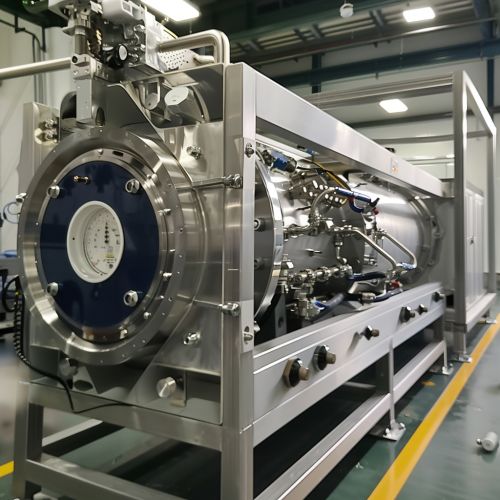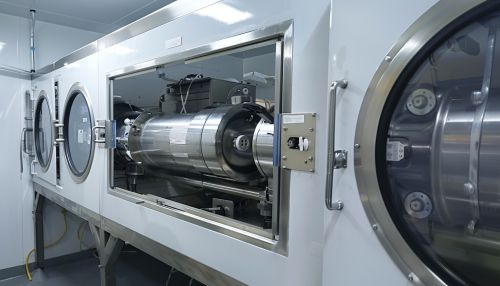Supercritical drying
Introduction
Supercritical drying is a process used to remove liquid from a material without passing through the liquid-vapor phase boundary, thereby avoiding the capillary forces that can cause structural collapse. This technique is particularly important in the production of aerogels, porous materials, and in the preservation of biological specimens. The process involves the use of a supercritical fluid, typically carbon dioxide (CO₂), to extract the liquid from the material.
Principles of Supercritical Drying
Supercritical drying leverages the unique properties of supercritical fluids. A supercritical fluid is a substance at a temperature and pressure above its critical point, where it exhibits properties of both a liquid and a gas. This state allows the fluid to penetrate materials like a gas while dissolving substances like a liquid.
Supercritical Fluids
The most commonly used supercritical fluid in drying processes is supercritical CO₂ due to its relatively low critical temperature (31.1°C) and pressure (73.8 bar), non-toxicity, and non-flammability. Other supercritical fluids include ethanol and water, but these are less commonly used due to their higher critical points and potential reactivity.
Process of Supercritical Drying
The supercritical drying process typically involves several key steps: preparation, supercritical fluid extraction, and depressurization.
Preparation
The material to be dried is first saturated with a solvent, often ethanol, which is miscible with the supercritical fluid. This step ensures that the liquid to be removed is compatible with the supercritical fluid used in the extraction phase.
Supercritical Fluid Extraction
The saturated material is then placed in a high-pressure chamber. The chamber is filled with the supercritical fluid, which dissolves the liquid within the material. The temperature and pressure are carefully controlled to maintain the supercritical state of the fluid.
Depressurization
Once the liquid has been dissolved in the supercritical fluid, the pressure is gradually reduced. This step must be carefully managed to avoid crossing the liquid-vapor boundary, which could cause the material to collapse. The supercritical fluid transitions into a gas, leaving behind a dry, structurally intact material.


Applications
Supercritical drying has a wide range of applications across various fields, including materials science, biology, and electronics.
Aerogels
One of the most notable applications is in the production of aerogels, which are highly porous, low-density materials with excellent thermal insulation properties. The supercritical drying process preserves the delicate nanostructure of the gel, resulting in a material with exceptional properties.
Biological Specimens
In biology, supercritical drying is used to preserve delicate biological specimens for scanning electron microscopy (SEM). Traditional drying methods can cause shrinkage and distortion, but supercritical drying maintains the specimen's original structure, providing more accurate imaging.
Electronics
Supercritical drying is also employed in the electronics industry for the fabrication of microelectromechanical systems (MEMS). These devices often contain delicate structures that can be damaged by capillary forces during conventional drying. Supercritical drying prevents this damage, ensuring the integrity of the MEMS.
Advantages and Limitations
Advantages
- **Structural Integrity**: Maintains the original structure of the material by avoiding capillary forces. - **Versatility**: Applicable to a wide range of materials, including aerogels, biological specimens, and MEMS. - **Efficiency**: Can be faster and more efficient than traditional drying methods.
Limitations
- **Cost**: Requires specialized equipment and high-pressure chambers, which can be expensive. - **Complexity**: Involves precise control of temperature and pressure, requiring skilled operators. - **Material Compatibility**: Not all materials are compatible with supercritical fluids, limiting its applicability.
